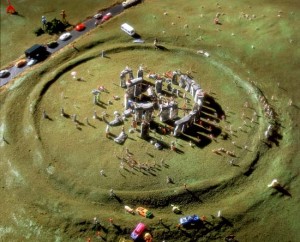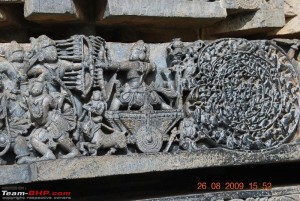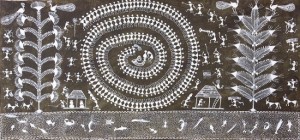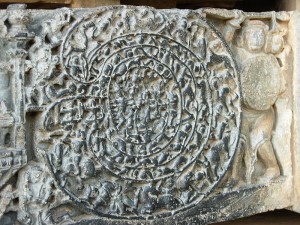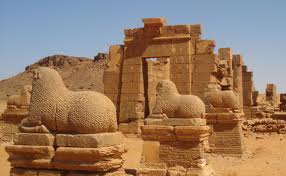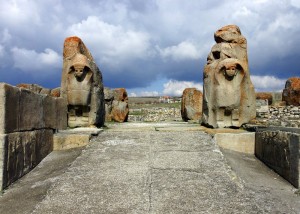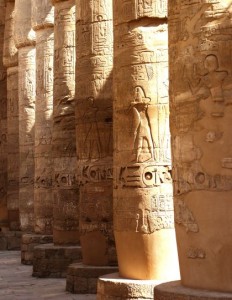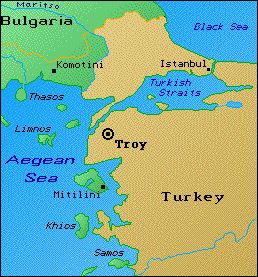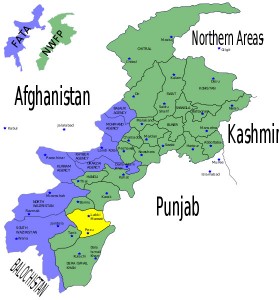Anatolia (Anatol — “east” or “(sun)rise”; also Asia Minor, from Greek Mikra Asia “small Asia”; in modern Turkish: Anadolu) is a geographic and historical term denoting the westernmost protrusion of Asia .
(1) Zalwar /Zalawar/ Jhalawar
History of Anatolia says the story of historical disconnection. I am producing here so many links with different topics I want to highlight. The story of disconnection will emrge gradually . The time zone is 1200 B.C.
Link to Hattusha –Zalwar
You pl read the facts carefully. look at words like Purashanda, Zalwar ,Hittite and Luwians kingdom.. Read king name like Naram –sin and Piyusti .
Look at the picture of Saligram(A stone received from Pharaoh of Egypt) too. Zalawar is not new term for Indian History. There is Zala river and Zalawar in Europe too. I have mentioned facts about Zalawar in my previous posts about Germanic tribes .you can find facts in my blog itself. Use your net for these both words and know more. It is not myth but history.Surprisingly there is Jhalawar in India too. Read about them all.
Link to Zalawar of Europe
– Zalavár is a village in Hungary, located in the Zala county. It is located around 9 km (6 mi) southwest of the Lake Batalon. In the 9th century, the city of Blatnograd/Blatnohrad, a fortified city built at the Zala river, was a capital of the Slavic Balaton Principality ruled by prince Pribna (“Privinae civitas, munimen, castrum in nemore et palude Salae” in a Salzburg chronicle).
Link to Zala river
Link to Jhalawar of Hindustan
– Jhalawar is a city in southeastern Rajasthan. It was the capital of the former princely state of Jhalawar, and is the administrative headquarters of Jhalawar district. Jhalawar was once known as Brijnagar.
(2) Ahhiyava /Hiyava / Haihaya
The following facts says the disconnection story of Haihaya and their sub tribe Bhoja or Mahabhoja . You pl look at equavalent term like Milawata / Malwa /Moravia , Tawagalawa and Talajanghas ,Parmara and Premysild , Betuwe and Betawa . You can see that all these words are connected with Bhoja or successor of MahaBharat warrior Mahabhoj. Avanti is also clue to ancient Aventicum of presentday Switzerland.
Link to Ahhiyava of Anatolia
It shaws that capital city of Ahhiyava (Of Anatolia)was Milawata (Millawanda, classical Miletus).you can see king name Tawagalawa.
Tawagalawa matches with Talajanghas clan of Haihaya?
The Haihayas were an ancient confederacy of five ganas (clans), who claimed their common ancestry from Yadu. According to the Harivamsha Purana (34.1898) Haihaya was the great grandson of Yadu and grandson of Sahasrajit .In the Vishnu Purana (IV.11), all the five Haihaya clans are mentioned together as the Talajanghas.
Link to Haihaya of India
The five Haihaya clans were Vitihotra, Sharyata (mentioned elsewhere in the Puranas as the descendants of Sharyati, a son of Vaivasvata Manu), Bhoja, Avanti and Tundikera. The Haihayas migrated from the west to the present-day Malwa region of Western Madhya pradesh). The Puranas style the Haihayas as the first ruling dynasty of Avanti.
King Bhoja
Bhoja was a Philosopher king and Polymath of medieval India, who ruled the kingdom of Malwa in central India from about 1000 to 1050 CE. Also known as Raja Bhoja Of Dhar, he belonged to the Paramara dynasty. The name Bhoja means “bountiful, liberal” and appears as the name of a tribe, the descendants of Mahabhoja, in the Mahabharata.
Link to king Bhoja
Bhoja established numerous temples, including the Bhojeshvara Temple at Bhojpur, a city he founded, about 30 km from Bhopal in Madhya Pradesh on the banks of river Betwa, and the Bhoj Shala, a centre for Sanskrit studies and temple of Sarsvati in present day Dhar.
Malava or Millawanda ?
Malava kingdom was one among the many kingdoms ruled by the Yadava kings in the central and western India, corresponding to the Malwa region. Sometimes Avanti and Malava were described to be the same country. They were originally a western tribe, in Panjab province of Pakistan. Later they migrated to Rajasthan and Madhya pradesh states of India. In recorded history of India, there were a royal tribe called Malavas. They were believed to be the descendants of the Malavas. Malavas were originally a tribe neighbouring the Madra territories in Punjab province of Pakistan. Ancient historians have mention about a great tribe in Indo –scythians called Abhira migrated from Eastern Iran to Malwa in A.D 151. The name Malava is derived from the Sanskrit term Malav, and means “part of the abode of Lakshami”. Ujjaiyini and Avanti, emerged as the first major centre in the Malwa region during India’s second wave of urbanisation in the 7th century BC.
Link to Malava kindom
Link to facts about Malava
Bohamia
Bohemia is a historical region in central Europe, occupying the western two-thirds of the traditional Czech lands. It is located in the contemporary Czesh Republic with its capital in Prague. In a broader meaning, it often refers to the entire Czech territory, including Moravia (Malwa ?) and Czesh Silesia, especially in historical contexts, such as the Kingdom of Bohamia. In the late 2nd century BC, many of the Boii tribe, after defeat at Roman hands, fled north across the Alps from northern Italy into an area called Boihaemum by the Romans, which included the southern part of present-day Bohemia. A native monarchy arose to the throne, and Bohemia came under the rule of the Premylslid dynasty, which would rule the Czech lands for the next several hundred years.
Link to Bohamia
Betuwe or Betawa river of M.P.?
The Betuwe (from batawja, “good island”, from Germanic bat- “good, excellent” and awj? “island, land near water”) is an area in the Netherlands. Tacitus knew it asInsula Batavorum (“Island of the Batavians,” the Germanic tribe from which the modern name is derived) and indeed it could be considered a large river island.
Avanticum in Europe
Link to Avenches
Link to Aventicum
The roots of Avenches go back to the Celts. A tribe of Helevetians had built a settlement on the hills of Bois de Châtel, south of the later Roman settlement.
The establishment of the Roman settlement of Aventicum, which became the capital of the province, took place around 15-13 B.C. Aventicum was the largest town and capital of Roman Switzerland (Helevetia or Civitas Helvetiorum). Its remains are beside the modern town of Avenches.
Yes , we can trace out presence of HaiHaya and Zala in Anatolia when Hittite and Luwian kindoms existed there in Anatolia. (1200 B.C.) .They were neighbour to those two kingdoms. Above links explains case of Disconnection clearly.
Read above links consentration on datelines or time period. History of Disconnection will emerge naturally.
I want to provide you two book links. Both the book syas the the story of Historical Amalgamation and disconnetion. Dont worry Book carry Indian terminologies.
Name of first book is “Full text of ” The people of Asia Minor”
Zoneless facts
Books tells about the historical facts of the period when no nations or national zones exist .These are Zone less facts . Ya, book mentions that…..
“In 1907 were first published from the German discoveries at
Boghaz Keui the names of the Indian deities Mitra, Varuna,
Indsa and the heavenly twins, the Nasatyas. The records belong
to about the beginning of the fourteenth century b.c, and, in spite
of the difficulties of the cuneiform syllabary, there could be no
doubt that here were names well known in Indian mythology,
though at a distance of some two thousand five hundred miles
from the nearest point of India. Since then numerals and other
words have bee*a discovered of the same origin. It is noticeable
that the words are not, as might be expected, in the Iranian forms,
which in later times are distinguished from the Indian forms by
well-marked phonetic differences 1 . There is no probability that
we have at this early date the records of Indian princes carrying
their conquests so far afield. The only feasible conclusion is that
here we have, in the fourteenth century B.C., the records of the
Aryan people not yet differentiated into Iranians and Indians, who
at a later period formed these two important Indo-European stocks.”
(p-13) “
Not Kanesh but Ganesh
It mentions that…
“The ethnological and philological relations of this stock are still
uncertain. The kings of Babylon, according to legend, were in touch
with them nearly 3000 years before Christ. From Tell cl-Anmnm
and from Assyria come two fragments which relate the story of
the campaign made by Sargon 1 into Cappadoeia in the third year
of his reign, in order to relieve the Babylonian colony of traders
at Ganesh (Kanes) from the attacks of the king of Burushkhanda.
In Ganesh we recognize the modern Ktiltepe, a colony which had
been founded by the city of Kish in southern Babylonia, Harmon’s
date is fixed about 2850 B.a Some 600 years later are dated the
cuneiform inscriptions found at Kultepe, which wen* the ream Is
of a business house in the colony. From about 1K00 u,l\ the
Hittites come more fully into the light of history.” (P=-11)
Pl read the book.
Naram-Sin (2750—2700 B.C.);
“Regarding the earlier history of the Matieni, however, the
documents of Boghaz Keui apparently afford a clue. Amongst the
eight peoples of whom the records are found in the great library
unearthed at Boghaz Keui between 1905 and 1907, there appears
one named Manda 1 , which is identified with the people of the
same name who had come into notice as early as the time of
Naram-Sin (2750—2700 B.C.); seven hundred years later as Mada;
in the second millennium b.c. the name appears several times as
Manda; in Assyrian inscriptions of the first millennium B.C. first
and rarely as Amadai and Matai and then frequently as Madai.
At the beginning of the first millennium B.C. a branch of the same
people, as we learn from the Assyrian documents, is found settled
near Lake Urmia.” (p=15)
Second book
The second book is “Full text of “The ruling races of prehistoric times in India ,southwestern Asia ,and southern Europe “”
Book link
The book also carries Zoneless world history.
Book explains how races emerges in the world. It mentions Ved vyas and says….
” Vyansa, as I have shown a few pages back, is
said in the Rigveda to be the father of Indra, and he repre-
sents the storm-cloud impregnated by the lightning flash, the heavenly fire-god Agni. He, in the Mahabharata, becomes
Vyasa, meaning, like the name Sebek of the Egyptian Maga
crocodile, the uniter. He is the priest-god of the alligator
race of the Maghadas, worshippers of the household fire, the
son of the Rishi Para-shara, the overhanging (para) cloud
(stiaraX and it is he, described as *the black and terrible
priest,** who is called in by his mother, Satyavatl, the sister
of the fish-god, to be the father of the son of Ambika, the
wife of his deceased and childless half-brother, Vichittra
Virya, meaning the virile energy {viryd) of the two colours
or races {chittra\ the Maghadas and Kushikas, as we are
told in the duplicate story of the same alliance described in
the birth of Jarasandha. The son of the united races was,
in the story I am now telling, called Dhritarashtra, meaning
he who holds the kingdom together and was bom blind ;
that is, he became the fire-drill which impregnated the
world’s egg laid by his wife Gandhari, from whence the
Kauravya were bom. Her brother is Shakuna, the kite or
the storm-bird. From this story, when compared with the
Egyptian evidence, the whole history of the sanctity of the
* ankh,** as the sign of life, is clear ; and the meaning and
origin of the myth is made still more manifest when we
consider the meaning of the name Gan-dharl and compare
her with the gods of popular Hindu theology. Her name
means she who wets (dhdri) the sacred enclosure (ffan):
that is, the worWs spring from whence the rivers of the
tortoise earth rise, which gives life to the holy birth-
land of the Kushite race, described in Essay iii., and she is
thus seen to be the goddess Dhar or Dharti, whom I also
show in the same Essay to be universally worshipped through-
out the hill-country of Western Bengal as the goddess of
the springs of living water. We can thus, in this series of
mythic symbols of the rain-god, trace the cross from being the
sign of the fire-father and mother to be that which depicts
the impregnation of the world or tribal egg. This latter,
when history was elaborated by the amalgamation of allied races, became the sacred triangle representing the union of
three races, the three seasons of the year and their parent
gods. When the confederation of the sons of the tortoise
became the rulers of the civilised world this primaeval triangle
became the Greek Cross of four triangles, or the four eggs of
the four allied races who united round the sacred mountain
the home of the rain-god, the blind father king of the sons
of the house of heaven. This conception of the world’s egg
originated, like the name and attributes of Istar, from the
theology of the Ugro-Finns, who believe heaven to be made
out of a severed egg, of which the earth is the yolk, the
heavens the upper shell, and the ocean the albumen. And
hence we find that some of St. George^s crosses at Villanova
are depicted as enclosed in the primaeval egg-shell. (P=22)
Book also mentions Saligram and syas…….
It is this mythology of the worship of Ra which was the
offspring of the union of all the tribes of the civilised earth
round the meridian pole of the tortoise earth, the mother
mountain of the East. This was accomplished under the
rule of Rama, meaning ‘ the darkness in Sanskrit and ‘ the
heights in Hebrew, who was otherwise called Varuna, the
god of the rain {var), the cloud, or the dark night, and it
was under his rule that the sons of Shem, meaning the name,
were born. It is this sacred name which appears in the
myth of Shamir the wonder-stone, the Sala-gramma of the
Hindus, which enabled Solomon, or Sal- man u the fish-god
to build the house of God without the use of hewn stone.
In the Bible story of the Septuagint, Solomon is said to
have built the temple at Jerusalem with Xldot^ aKporoiMot^^
or rough unhewn stone,^ but in the Arabic legend, from
which the story arose, he is said to have cut the stones with
Shamir. The story how Shamir was procured takes us back
to the days of historic myths, ages before the date assigned
to Solomon, the king of Judah, in our chronology, to the
days of the birth of Danu the judge, the father of the race (p27)
We find frequent word “Asyrian kingdom ” during reading history of Anatolia. The word has Indian root.’
Read following Link
Link -1
They are the people who developed ancient Bohamia on European land. yes Bohamia stand for Bhoja that is Brovij of Bohamia.
In Bohamia there was Deynsty named Premysil.
Link -2
——————————————
At the end of the research
Anarta / Anatolia /Atlantis
At the end of research we find that Anatolia was carrying history of ancient Anarta kingdom of Bharatvarsha. That Shryati founded in present day Gujarat. capital city of Anarta was Kushasttali.Kushsthali was beneath ocean.WE have found lost continent Atlantis. Now we find that original root word of Crete was Kursawar or Kussattar. .Shryati happened to be prior to Ram and river Saryu was named after Sharyati. Pl read The detail I mention in the chapter 7 (1)
lINK TO ARCHAEOLOGICAL RESEARCH OF KUSHTHALI
LINK TO BOOK BY HELENE PETROVNA BLAVATSKY ( I WANT TO CLARIFY THAT SHE HAS -NOT SOMETHING BUT EVERYTHING- TO DO WITH KRISHNA AND PARTICULARLY WITH BALDEVA AND HALAR..ANARTA) READ PAGE 259.
Now if we find all these indian Royals in Anatolia..then it is not matter of Surprise.they were carrying their traditions only.
PL READ DETAILS IN CHAPTER – 7(1) of Book section

